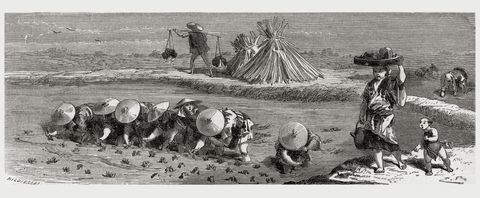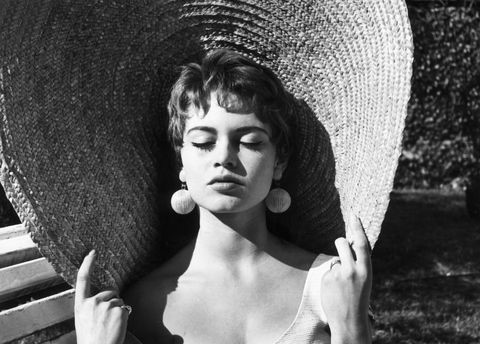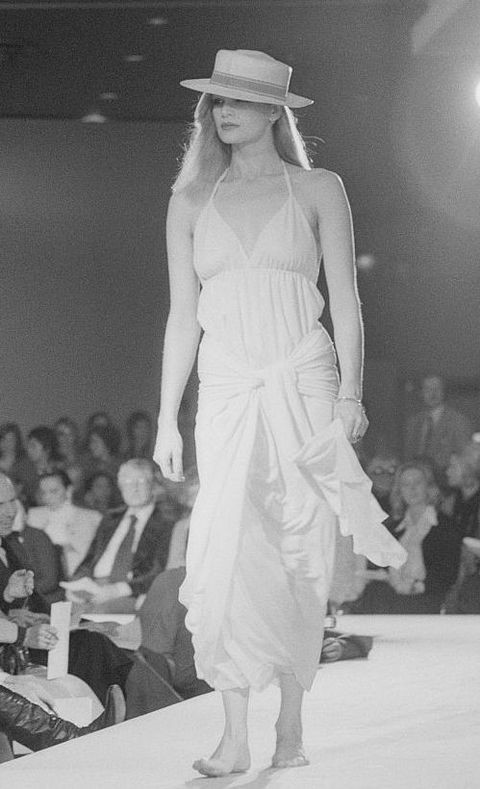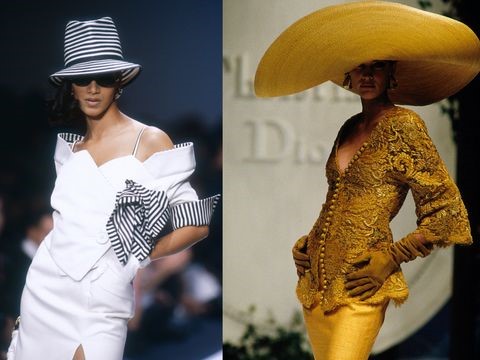No products in the cart.
News
The history of the straw hat (Summertime staple)
How the summertime staple became a major style statement
Reaching for a straw hat to complete our seaside look—or frankly, any summer outfit—is as instinctive to us as say, oh I don’t know, breathing. Next to sunglasses, it’s one of the most obvious accessories to use as protection against the sun’s harmful UV rays, but its origins are less than clear. When an item is as ubiquitous as that of a straw hat; it’s virtually impossible to determine its original maker or even pinpoint the first documentation of its existence. (Fun fact about hats: Historians believe that some type of head-covering piece—as protection against inclement weather—was the first article of clothing ever worn by humans.)
Straw hats—distinguished by their woven makeup of different types of straw or fibers similar in texture and strength, like braided hemp, raffia, and jute—are believed to have been worn in Europe and Asia as early as the 15th century (after the Middle Ages). In most countries in Asia, including Japan, China, Indonesia, Malaysia, and Vietnam, rice paddy workers topped their heads with conical-shaped hats to shield themselves from the sun and the rain; though legend in Vietnam has it that the hat, or nón lá in Vietnamese, originated from when a goddess descended from the sky wearing an enormous hat made of four large leaves held together by bamboo sticks, which protected the people from a torrential downpour.
CULTIVATION OF RICE IN JAPAN IN THE 19TH CENTURY
In the Très Riches Heures du Duc de Berry, the most famous surviving example of an illuminated French Gothic manuscript created from 1412 to 1416; short-brim straw hats are shown mostly worn by men. Though by the 1700s, French women wore straw bonnets and in the 1800s; European paintings all depict women posing for portraits in ribbon-adorned floppy straw hats and floral-strewn ones with an upturned brim. Vincent Van Gogh even immortalized his straw hat in a self-portrait in 1887. The first cowboy hat—made of straw, might we add—was invented by John B. Stetson in 1865, and the silhouette basically remains unchanged to this day.
PAINTING BY GUSTAVE LEONARD DE JONGHE
By the late 1800s and early 1900s, straw hats were embraced by everyone. But it wasn’t until President Theodore Roosevelt’s 1906 visit to the Panama Canal—when he was photographed at the construction site in his pale suit and Panama hat—that the accessory catapulted to fame. Light in weight, the summertime staple exuded equal parts casual and polish; by 1944, it became Ecuador’s number-one export.
VACATIONERS IN SANTA MONICA, CALIF. IN 1890
Wider brim styles skyrocketed to popularity about a decade later, though they were already seen as a beach essential. Frances Dee, Adrienne Ames, and Judith Wood coordinated in matching straw hats during a seaside portrait in the ‘30s. Then-newcomer Brigitte Bardot famously wore one with an exaggerated brim when she took got her headshot taken in 1955. French actress Laurence de Monaghan styled her two-piece on the set of the 1970 dramedy Le Genou de Claire with a floppy shorter-brim version.
BRIGITTE BARDOT, 1955
CHLOE SPRING/SUMMER 1976
In the years that followed, straw hats appeared in every shape and form. Fashion, of course, had a say on the matter. One of the first runway instances of a straw hat—a taller style with a frayed edge—was in 1965. And in 1976, at the helm of French fashion house Chloé, Karl Lagerfeld sent out a model; who wore a ribbon-adorned boater hat with a white Grecian-style halter dress.
Fast-forward to the ‘90s and outsized silhouettes were in; with Jean-Charles de Castelbajac bringing the most with an over-the-top style in 1991 so large; that it was hard to determine where the hat ended and the shirt began. The next year, Italian designer Gianfranco Ferre showed both short-brim straw fedoras (one gilded in gold, another rendered in black-and-white stripes); and voluminous floppy hats for two separate Dior Spring/Summer 1992 collections (the former for ready-to-wear and the latter, for couture).
DIOR SPRING/SUMMER 1992: READY-TO-WEAR (L) AND COUTURE (R)
ANNA SUI SPRING/SUMMER 2007
Of course, designers couldn’t resist giving straw hats a high-fashion costume spin: Anna Sui reimagined them to resemble pirate hats for her Spring/Summer 2007 collection, while Karl Lagerfeld embroidered straw conical hats in a Chinese-inspired Chanel show that was held in Shanghai in 2009.
But this season, there’s been a burst of renewed interest in straw hats, as brands sent out every kind of iteration for Spring/Summer 2018: Delpozo featured a whimsical bow-shaped headpiece, A.W.A.K.E lengthened the crown to a comical degree; Gucci dramatically slanted the brim downward, Loewe sent out straw safari-esque styles, and Missoni, Giorgio Armani; and Jacquemus all delivered statement hats with an extra-long brim that have since gone viral.
Maybe it’s because of its low-maintenance nature or its utilitarian roots, but the straw hat has been (and continues to be) one of those incredibly rare items that has been able to remarkably transcend age, class, gender, and fashion genres. Is it the most democratic fashion item? It certainly seems to be that way.
Safimex supplies many styles of straw hats. If you are interested in importing straw hats, please feel free to contact us for more details of our stylish straw hats.
Lucy (Ms.)
Export Executive
Email: Sales2@safimex.com
Skype: gautrucluca | HP/WhatsApp: (+84) 396802832
SAFIMEX JOINT STOCK COMPANY
Head office: 216/20A Duong Ba Trac street, Ward 2, District 8, HCM City





